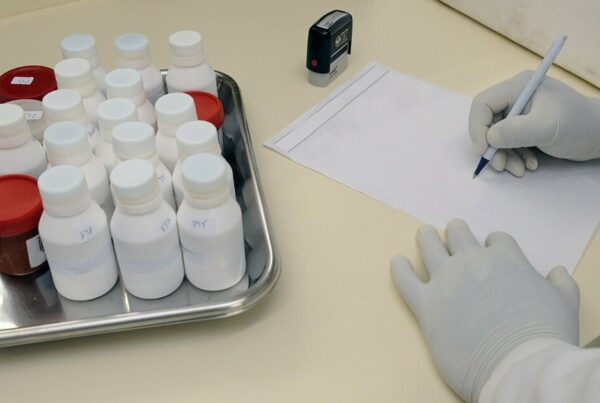The newly growing approach to patient-assisted research has lit a number of small fires that promise to ignite a social movement away from the paternalistic model of healthcare, and towards a more engaging, inclusive, and patient-centered approach to research.
The underlying philosophy is that this needs to happen as a matter of social responsibility, and that patient-driven research requires not a simple modification of current procedures, but a significant paradigm shift needs to occur to break away from the traditional mold by shaking up hierarchies and resetting the frameworks involved.
We’re going to take a look at what this approach entails, how it’s currently looking, what the critics say about it, and what needs to be done to make it a sustainable change.
The Rise and Role of Patient-Driven Research (PDR)
Early clinical trials would focus on measurable qualities and quantities of the outcomes of tests. For example, analgesic therapies may have measured in terms of hormonal responses, or perhaps the developmental effects on fetuses, but seldom on whether the painkilling effect was actually working from the opinion of the patient.
Reported side effects, and how they affect the quality of a patient’s life, were another thing that was often overlooked, especially when they were rated subjectively by the patients. These oversights were usually in favor of more objective, impersonal measurements, with the focus being on the safety and efficacy of the medication, and not so much on whether the patient benefitted from it personally as a therapeutic solution.
This appears to be changing as of recent decades, as more focus is shifted towards the individual involved in the trial and patient-centered outcomes are being targeted more seriously. Further, this is a trend that appears to be growing, as Congress has establishes PCORI, the Patient-Centered Outcomes Research Institute with the aim to fund research that looks more closely into solving problems that are relevant to patients and other stakeholders.
This is a drive from several angles to change the clinical trial culture towards one that prioritizes patient input and builds research capacity with the development of patient-led data networks that are interconnected with the researchers. Communities are being formed with this shared philosophy, and new approaches are being designed in accordance with it.
There’s a unique way in which the PDR communities tie together entities. The effects span from funding advocacy to data collection and policy design. These unusual networks bring with them unusual insights, and with time, the idea is that these insights will prove to be measurably valuable to medical research and patient outcomes in turn.
The new links between stakeholders represent a change in the way information is illuminated, shared, prioritized, and reacted to, and in many minds, this change is a positive one with incredible potential.
There’s still a long way to go in this regard, as we’ll see in the later sections, but there are ways to overcome the challenges faced by PDC and its criticisms of it. Before we get to that, let’s take a look at how the approach stands today by looking at some of the literature of one of its major champions.
The Current State of the Patient Oriented Approach
The PCORI has come a long way in promoting a patient-driven research community and has developed a sustainability workgroup that led to the design of the Value Proposition Playbook for Participant-Driven Research in Healthcare. In essence, this is an evidence-based, practical guide to act as a roadmap tailored to the unique needs of the community, and represents where patient-driven research has reached.

1. Identifying assets and opportunities
PCORI states that the first step to defining value is to understand what the PDRC has, and what it can accomplish within its areas of reach. All the strengths and shortcomings of the community need to be identified, and external influences need to be determined if and where they may affect the sustainability of this value, particularly if they are a hindrance to it.
Getting this stage right is more important in the example of trials with many stakeholders. The community needs to know what it can’t promise, as much as what it can so that the sustainability of the approach as a whole isn’t weakened by broken commitments and unfulfilled assurances.
2. Demonstrating value to the participants
In order to translate this value into understandable terms, it’s important to recognize that there is a subjective approach to research from every stakeholder and every individual. Of course, this includes patients, for whom the value of the studies may be entirely different from that of the clinician.
Participants can have a say over the way research is run only if they have access to a community of people with a shared experience, and the results of the research are made widely available. There are tools within the workbook that provide strategies to deliver continued value to participants by involving them in the research and promoting engagement at various levels in order to achieve this.
3. Demonstrating value to partners
Ensuring the delivery of value to the invested stakeholders means examining the current and future partnerships that need to be investigated and evaluated for how each can be provided value while maintaining the patient voice and the commitment to the community members as a whole.
This is one of the key processes in the approach, as partners will likely be unaccepting of a drop in value. On the contrary, to overcome the perceived cost of change, value to partners needs to be emphasized as potentially greater than on the current trajectory.
4. Crafting the Value Proposition
Now that the assets, the participants, and the stakeholders can be aligned, the value proposition can be constructed. This is the final stage of the playbook, and it offers a model for how each organization can move patient-driven research from an idea into a sustainable ecosystem. This process requires the understanding that demonstrating value is not a single event, and needs to remain dynamic in its approach to both patients and partners.
In this way, it’s possible to create value propositions that relate to all stakeholders and align values between them, and this can be harder than expected when the concept is still novel.
Over time, this process will become easier, as the approach itself becomes fine-tuned and the stakeholders involved become more familiar, but as of now, it’s clear that there will be some significant roadblocks in the implementation of this roadmap for many stakeholders.
So, this represents the current philosophy and practices behind the growing community of patient-driven researchers, but there are critics, skeptics, and constructive suggestions around its limitations. Different organizations will have their own roadmaps to success, and this represents the early days of a change in culture, as much as it throws up some hindrances that come from a lack of consistency between these organizations.
Patient Driven Research: The Blind Spots
As you can see from the workbook outlined above, the patient-driven approach to research intends not only to focus on patient-based outcomes but to incorporate patients in a more active role in the research teams as a whole.
Critics suggest that this approach has not been conceived based on any evidence that it will have a positive impact on the quality of research, health policies/services, or on health outcomes overall, despite the attitude from the community that this is the goal.
Further, there are claims that there is no consistency in the terminology of reporting in patient-oriented research examples investigated, making it very difficult to draw any causal links between this form of research and health policy or outcomes.
The critics go on to say that those articles that do make strong claims in this regard do not support them with evidence and point to their hypothetical value in the form of potential, and theoretical impact, and that evaluation of these research approaches is sorely lacking. Specifically, one paper states that while many papers theorize or propose intended impacts, very few empirical studies have applied or tested hypothesized impacts.
So, there are legitimate concerns relating to the empirical backing of patient-oriented research, as there will be with any new approach to a scientific endeavor. In order for the research to sustain itself, these concerns do need to be addressed, and with time, if it proves to be as effective as the PDRC insists it is, more stakeholders will get on board.
It must be taken into account that with any shift as large as PDR necessarily will be within the research community, there will be significant resistance from the inertia of tradition, and the anxiety that change brings with it across every stakeholder. These roadblocks have no inherent merit, and must simply be anticipated as part of the necessary opportunity cost of renovating a long-standing institution.
That said, stakeholders motivated by this anxiety are more likely to spot valuable points of weakness in the approach, and should therefore be engaged with and considered for both their insight and as a way to reassure everyone that the path they’re being asked to follow is right for them. Without consensus, the ability of PDR to sustain itself may be jeopardized, whether it proves to be an effective change or not.
We’ll take a look into some of the elements of this sustainability shortly. First, let’s look at a successful case report from PCORI.
A Real-Life Example of Patient-Driven Research
To get a feel for the process in action, consider the following account, published on the PCORI blog.
The process began with a meeting between both patient and clinician leaders of a trial regarding primary immunodeficiency, and almost one hundred patients and their family members to discuss four relevant questions in depth.
The first question related to the risks and benefits of possible new stem cell transplant uses, and who is most likely to benefit. Then, the groups were asked about alternative delivery methods for immunoglobulins and patient preferences.
The process began to show its worth when the third question, regarding mildly elevated body temperatures at the start of infection, came up. 80% of patients reported that their body temperature was lower, not higher, which was news to the clinicians, and a process to demonstrate this as fact was discussed with the intention of publishing it as a discovery. The design of the appropriate study was then initiated with this in mind.
Finally, a question relating to the role of antibodies to prevent infection was discussed. Variation in practices was highlighted between physicians, and the answer remained inconclusive.
The author notes that research questions were being volleyed back and forth for over an hour, and the impression was such that the patients contributed a valuable perspective by asking questions that would not have arisen outside of this approach, to the point of inspiring publishable work.
This account paints a picture of some of the immediate benefits of having patients informed and involved in proceedings. If nothing more, the meeting shows the power of engaging patients on a level playing field and the way it can bring immediate attention to otherwise-overlooked, significant details.
These anecdotal stories of course do nothing to placate the call for evidence, but they do drive engagement, and this supports one side of the sustainability problem: as significant stakeholders get encouraged to come on board, it looks like definitive results should be around the corner.
The Future of Patient-Driven Research and How to Sustain It
There’s no question that PDR is on the rise. Congress, federal health agencies, and private industries are all paying attention and the future looks set to investigate this approach from several different stakeholder pathways.
The FDA has devised a patient engagement advisory committee that aims to use patient opinions in the design and regulation of new devices and states that engagement is a driving force of the FDA’s ongoing mission. This attitude acknowledges the potential for a shift in approaches while offering no guarantees to its efficacy of yet.
The NIH is exploring genetics and their relationship to the environment, health, and disease, by gathering a cohort of around one million patients to share their experiences. Congress has set the aim for the 21st Century Cures Act to have patients front and center of the efforts to develop new therapies rapidly.
So, some heavy hitters are showing an interest, however, while the growing trend needs, to continue to focus on patient input, the effectiveness of this approach needs to be verified for it to be sustainable. This then seems that there are two major challenges to overcome to sustain the practice:
1. Exposure and engagement
Where possible, transparency may hold the key to both issues here. As more reports come out, more patients spread the word of their experiences, and engagement becomes better and more deeply understood and implemented, more entities will hop on board. The outcomes of the new wave of FDA and Congress interest should go a long way to creating high-profile and appealing prospects to researchers.
2. Record-keeping, unified reporting, and frameworks
For the hard evidence, there must be standardized and steadily-developed approaches to recording and reporting, as well as accessibility to these standards for both patients and partners. This accessibility will allow for deeper investigations into legitimacy, and more detailed analyses of outcomes, and will, over time, form the body of evidence required to ease the concerns of many critics.
One pushback by PCORI points out that there may be a higher degree of rigor expected in the PDR approach than is already present in current medical research. Linking research to health outcomes is not easy at the best of times, and this is true regardless of the approach.
They follow up with the acknowledgment that although it is too early for the most powerful evidence to reveal itself, the foundation of the PDR approach is in the socially justified, and morally imperative thing to do and that it is possible to work towards the long-term outcomes with this in mind, building new frameworks along the way.
Conclusion
Patient-oriented research is motivated by the idea that it is a morally superior option to medical research. Regardless of whether this is true or not, it necessitates a significant expenditure in terms of the overhaul to traditional research and will be a difficult transition to pull off.
Further complicating and delaying this maneuver is a distinct lack of satisfactory evidence that would entice particularly the financially-minded stakeholders to get involved. It seems that in order for PDR to be embraced across the board, the culture needs to continue to be explored, as it is now by many organizations who are showing an interest.
If these organizations can prioritize consistent design, collection, and reporting of their data, it may not be long until this evidence becomes apparent. How long that takes depends on the level of cooperation by financing, and transparency across the organizations involved.







